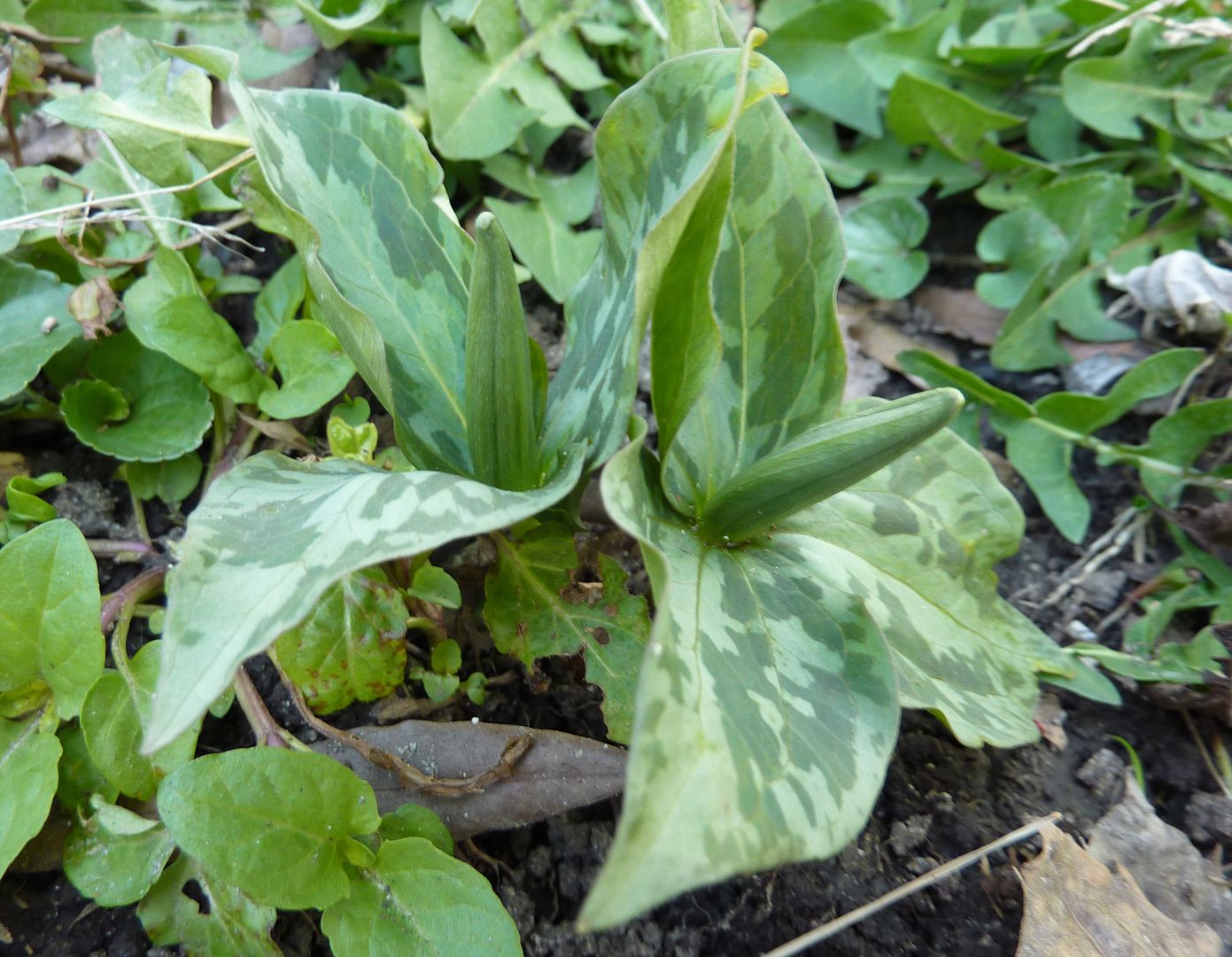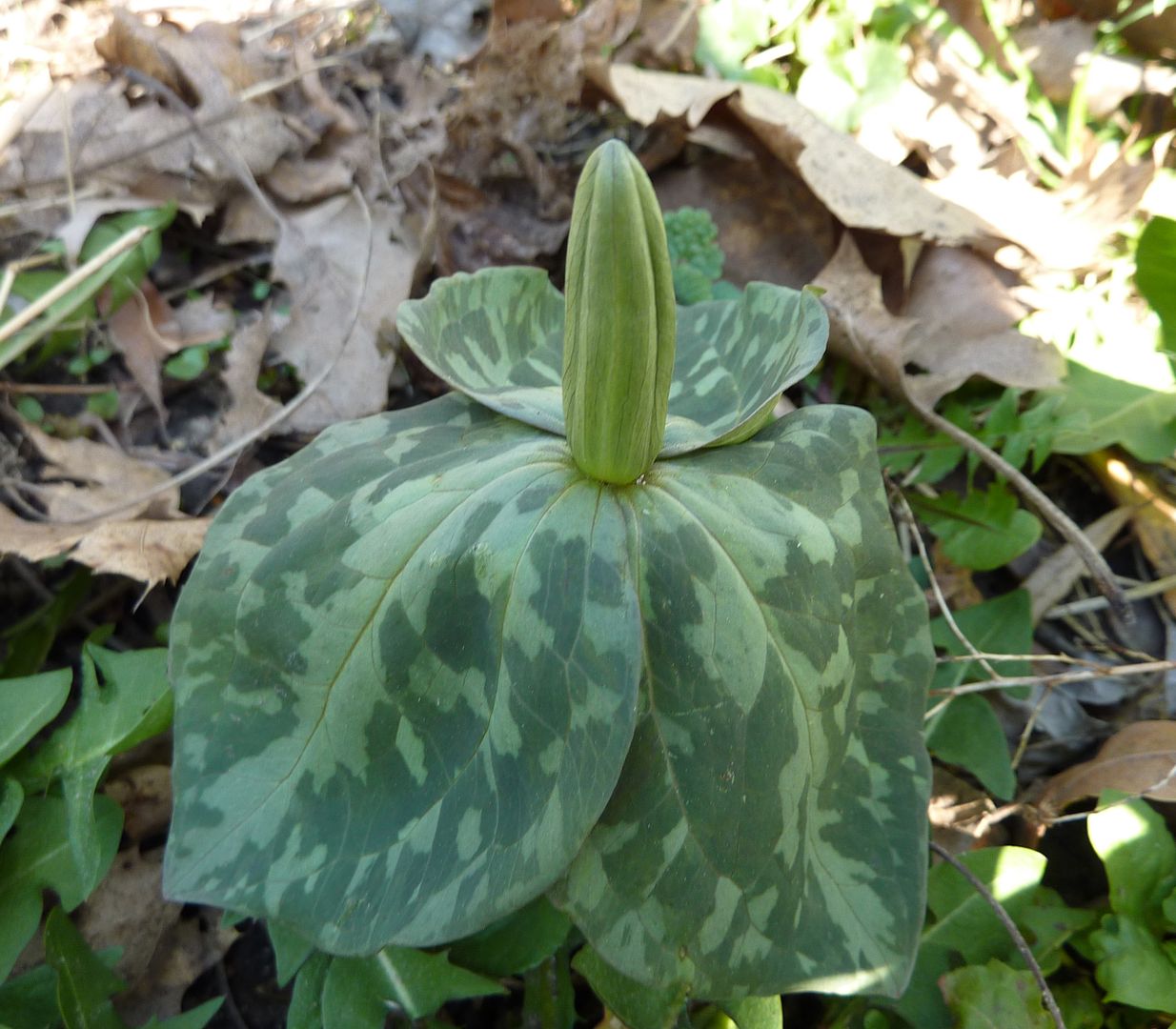For a while I thought Trillium grandiflorum wasn't coming up this year. The assorted T. sessile group species (photoed above) like Toadshed, and what might be T. luteum all came up. I actually won't know what some of these are until they flower, it was that long ago that I planted them. I'm even finding patches of Trillium I'd forgotten having planted.
The sessile group of Trilliums is defined as any Trillium with the flower right against the three main leaves. Meaning there isn't a stem between the flower and leaves. Photoed above is one such Trillium, I forget which exactly but the flower is very dark red, the main stem coming from the ground is also very red too. Surprisingly this species can tolerate full sun all year long. This is unusual for Trilliums as most of them turn to full shade loving plants over the summer, but clearly this one above is doing well. It's not only flowering but also dividing at the same time. They get more than 6 hours of direct sunlight which is impressive for said full shade loving plant.
So as I was saying, all the other Trilliums came up and many produced a flower bud. There were no signs of T. grandiflorum anywhere. Then suddenly...
Not only did T. grandiflorum emerge over night, but two days later this happened... (also, notice the stem between the flower bud and the leaves; not a sessile group species at all.)
Kind of makes all the sessile group Trilliums look slow by comparison. But at least most of the sessile group gave me something to look at. What's great is these are all popping up now and flowering right as all the dutch bulbs (tulips, daffodils, hyacinths) are starting to crap out. So these fit right in with the landscape and succession of blooms perfectly. Also their foliage can be an eye catching "ground cover." Sessile group in particular tend to have mottled leaves (speckled with color).
Okay Trilliums are not really a ground cover since some grow taller than 18" but it's a layer of foliage not meant to be walked on all the same. A few such as T. cernuum, T. rugelii, and to some extent, T. erectum prefer to hide their flower under the leaves. Well that's not very showy, but simply putting them on a hill side or in an elevated spot so they're more at eye level is the how you get around this.
Later in the year each plant forms a single berry that's filled with seeds. Each seed has a packet of eliasome on it which ants absolutely love. Different Trilliums produce different sized seeds, and different sized ants will be happy to bring the seed home. But only if the ant is the right size for said see. To small and it's treated as a food source, and rather than bringing it home a trail of ants arrives and only takes the eliasome. If the ant is big enough though, there's no need to get the rest of the colony involved. The seed is carried home, or at least a few yards from the parent plant. Assuming the seed makes it into the ant nest, the eliasome is eaten and the seed is discarded as a rock or pebble in the ant nest, often one of the unused tunnels that may cave in over the winter when the ants have gone deeper or moved on entirely. Regardless though, a seed underground is protected from birds, wildfires, seed eating beetles and so on. Plus it's in the best spot a seed could be, underground. The only downside to this relationship is some ant species also eat seeds.
As an afterthought I wonder what happens if the seed is planted to deep into the ant's nest?




